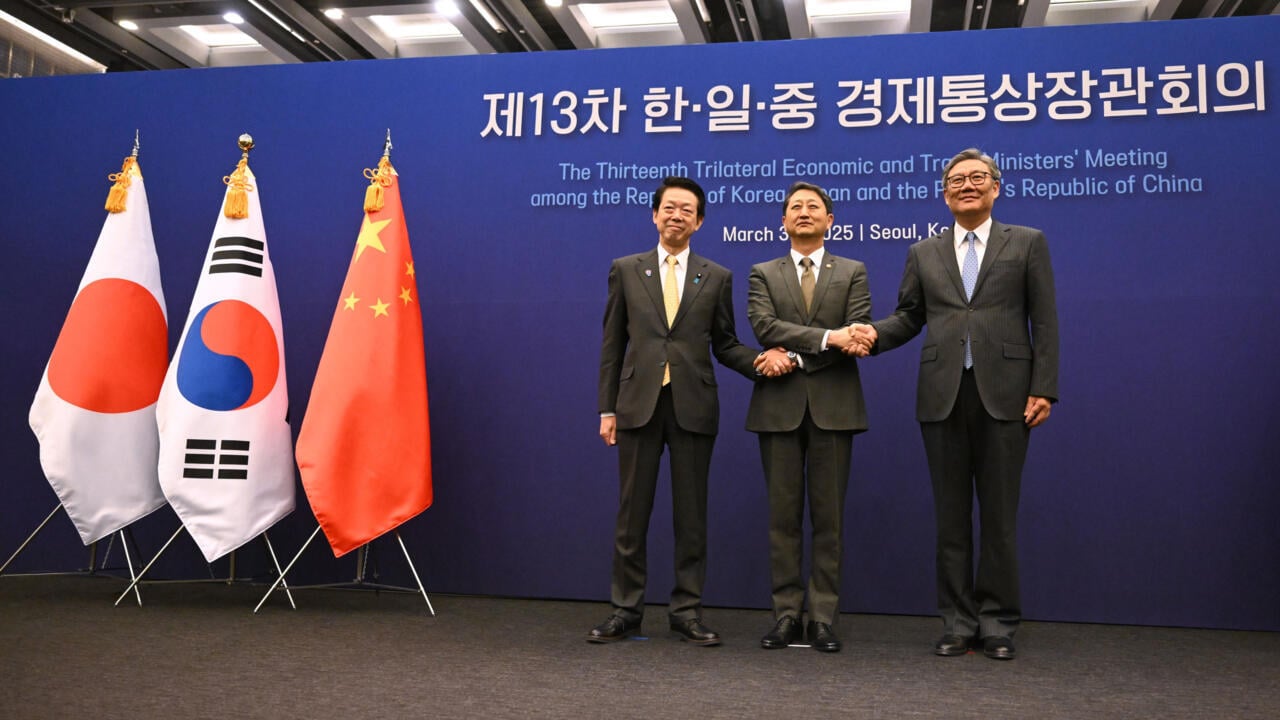The news about the U.S. tariffs has become a center of conversation in the past few weeks. Not only will these tariffs impact the price of many products and sectors, but they will also affect the economic stability in many countries around the world, including in Asia. Because of this, the three behemoth countries in the region—China, Japan, and South Korea—are reportedly working together to fight these U.S. tariffs. What is the agreement all about? Let’s dive into the drama of the recent trade war pushed by the U.S. tariffs.
Let’s talk about the U.S. tariffs first…
If you’ve been following global news lately, you might have noticed something popping up more often in headlines: U.S. tariffs. Once a hot topic during the Trump administration, the conversation regarding tariffs is back in the spotlight, with many businesses and governments around the world paying attention. But why now? And what’s fueling the renewed conversation?
Tariffs are essentially taxes on imported goods that are meant to make foreign products more expensive and are developed to give domestic industries a competitive edge. While it may sound simple, in practice, they can trigger a chain reaction that impacts everything from consumer prices to international diplomacy. Over the past few months, the United States has been re-evaluating and reintroducing tariffs on goods from many countries around the world, but particularly from China. This has put a lot of strain on global supply chains, which were just getting back on track after pandemic disruptions.
One reason this is blowing up again is that U.S. manufacturing and tech industries are trying to rebuild and become less reliant on China. This has led to tariffs targeting specific sectors like semiconductors, electric vehicles, solar panels, and more. These are areas where China currently dominates in the global economy market. However, at the same time, the United States is attempting to support its allies, but many of them are also caught in the crossfire, especially when broad tariffs are implemented. Suddenly, what appeared to be an economic battle between China and the United States is now looking more like a global balancing act.
The ripple effect because of the tariffs
The ripple effects are real and massive. Not only are prices for many goods creeping up again, but many companies are adjusting their supply chain strategies. Because of the tariffs, many customers are also starting to feel the pinch. Small and medium-sized businesses, which rely heavily on affordable imports, are also becoming more vulnerable. As a result, some of the United States' largest trading partners, including the European Union, Canada, and Asian countries, are starting to push back, warning that retaliatory measures may be in the works. Countries such as Vietnam, India, and even parts of Europe have felt the repercussions as global supply chains were forced to shift, reroute, or stop completely.
However, while many countries in different regions feel the effect, no region has felt the pressure quite like Asia, especially since the main target for the tariffs is China. As I’m writing this, most imports from China to the U.S. have faced a levy of 145% under the U.S. president’s new trade regime. China is fighting back with its own 125% tariffs on American products coming into the country. The tension rises as China enters into a special agreement with Japan and South Korea to explore stronger trilateral partnerships to weather the storm together.
China, Japan, and South Korea are meeting for the first time in five years.
In a rare show of unity, China, Japan, and South Korea have come together for high-level talks, the first of their kind in 5 years. While such a gathering might seem like business as usual, this is considered something huge, especially as the Asian powerhouses have had a complicated and sometimes tense relationship in the past. But now, driven by a common challenge, the growing pressure from U.S. tariffs and trade policies, they’re ready to talk cooperation.
Historically, the ties between the three nations have been shaped by centuries of rivalry, war, and political mistrust. From Japan’s occupation of Korea and parts of China in the early 20th century to ongoing disputes over territories and history textbooks, things haven’t always been smooth between them. It turned into a point where diplomatic spats and cold shoulders were more common than trade agreements and handshakes.
But times are changing, and so is the global economic landscape. The recent US tariff policies have struck at the heart of their economies, disrupting supply chains and forcing them to reconsider their strategies. This is where the concept of "teamwork" does not seem so bad after all. At their most recent meeting, the three countries reportedly discussed ways to increase regional trade, reduce reliance on U.S. markets, and strengthen economic resilience. They are looking into common interests like technological innovation, renewable energy, and regional supply chain security. While there is still a lot of historical baggage in the room, the need to respond to Western economic pressure appears to be opening the door to more pragmatic cooperation.
The tariffs is more than just about the trade
And here’s where it gets interesting: the tariff conversation isn’t just about trade anymore; it’s about global influence and control. In a world where digital assets, tech innovation, and clean energy are shaping the future, who controls the market matters more than ever. The U.S. is betting that tariffs can help steer that future in its favor, but that strategy could backfire if it leads to deeper divides or sparks a trade war.
Tariffs have an impact on many aspects beyond cars and smartphones, including pharmaceuticals, chip imports, toys, and many more. The technology industry and the cryptocurrency world, for example, are both quietly experiencing tremors. Major cryptocurrencies such as Bitcoin and Ethereum are experiencing significant declines due to heightened global risk sentiment following new U.S. tariff announcements. As fears of a global economic slowdown grew, commodities and safe-haven assets also reportedly experienced sharp declines.
However, while in the short term the market may react negatively due to the rising levels of fear, uncertainty, and doubt, that doesn’t necessarily mean that investors will continue to be bearish in the long term. It depends, among other things, on how clearly the governments communicate their plans and how well these plans are executed. Some analysts believe that it could have a positive impact on the industry in the long term. As the U.S. continues to impose stricter financial regulations and trade barriers, many investors and companies have the potential to look toward decentralized finance and digital currencies to sidestep some of these economic hurdles. More interestingly, some analysts believe this tariff war could even shift the global crypto balance. If traditional trade ties weaken between the U.S. and Asia, many countries may increasingly turn to blockchain-backed platforms for transparency and efficiency in supply chain logistics, further embedding crypto tech into the real-world economy.
Conclusion
At the end of the day, this isn’t just a government issue — it’s a global story that affects industries, consumers, and everyday people. The ripple effect of tariffs might already be on your radar. And with so much at stake, this is one conversation that’s not slowing down any time soon.
As countries reevaluate their alliances and trade strategies, it’s clear that the world is entering a new chapter, one that may reshape how economies interact and compete. Whether these changes will lead to greater cooperation, more conflict, or something in between remains to be seen. For now, all we can do is watch closely, adapt where we can, and see what the future holds in this ever-evolving global economy.




